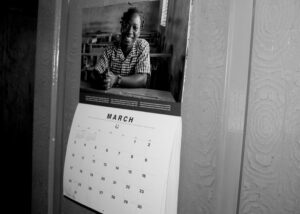A holy challenge to become living bodies of Christ
Re: “A year of re-visioning” editorial, Jan. 2, page 2.
Thank you for challenging Mennonite Church Canada to give priority to re-visioning over re-structuring. You may be correct in suggesting that we are in danger of perishing for lack of vision (Proverbs 29:18).
On the bright side, the Future Directions Task Force members did have a vision. The vision began by asking, “What is God’s Spirit calling us to in the 21st century?” Their answer was that the “local congregation is the primary setting and focal centre for worship and mission.” I believe the Task Force had a vision of more than 200 Canadian congregations each functioning as a living body of Christ in their communities and world. Can someone give fresh life and structure to that vision?
It will be a holy challenge for the new regional churches and their appointed national staff members to help local congregations re-envision themselves as living bodies of Christ. What will it take for us to continue doing in our communities what Christ began to do in his?
A clear vision that sees a congregation as a living body of Christ will bring joyful action to our deeply held understandings of the church as community, discipleship and peace. By its very nature, a living body of Christ is a community engaged in discipleship, working for peace and justice as Jesus did.
Palmer Becker, Kitchener, Ont.
MC Canada responds to funding questions
Re: “How much have funding losses affected Future Directions?” letter, Feb. 13, page 7.
While funding is a very real aspect of the Future Directions process, it is not the only aspect of our national and area church needing revitalization. It would be more accurate to say that funding declines are rooted in societal and cultural changes, as Future Directions reports have indicated.
All denominations and most congregations are experiencing societal and cultural shifts that are resulting in changing giving patterns. The matrix of cause and effect is a complex one that includes many factors. For example, there has been a huge increase in the number of registered charities in Canada since the 1990s. People are not necessarily becoming less generous, but rather they are being generous differently than they have in the past. There is a plethora of good causes to support locally, nationally and internationally. Generous congregational and individual donors have more choices for their generosity than ever before.
As to the question of whether congregational or individual giving declines are at issue, the answer is “yes” because it depends on the year. Sometimes one or the other is more or less than anticipated. Leaders, however, are cautious about how to interpret giving declines; none want to be perceived as blaming either category of donor.
Mennonite Church Canada’s audited financial statements are freely available online in annual assembly report books, and are reported each year at an annual general meeting or a national assembly. These documents are also sent to each congregation, as are twice-annual appeals presenting opportunities for giving to national church ministry. We continue to encourage congregations to share this information with their members.
Dan Dyck, Winnipeg
Dan Dyck is MC Canada’s director of church engagement-communications.
Article brings back good memories of Ottawa Mennonite
Re: “No longer alone,” Jan. 16, page 24.
This article by Dave Rogalsky on Ottawa Mennonite Church brought back many satisfying memories.
When I left southern Ontario to attend medical school in Ottawa, I had been warned by my home pastor to avoid the congregation because it was too ”liberal.” But after several unsatisfactory visits to evangelical churches, I went to Ottawa Mennonite.
As the final bars of the closing hymn sounded, I was approached by Bill Janzen. When he heard I was planning to go back to the student residence for a solo lunch, he informed me this didn’t meet with the usual church practice. As you can surmise, this was the first of many, many faith community dinners.
My prejudices were never met with defensive responses, and I was “loved” into fellowship. For the first time, I studied with Mennonites of many traditions, and preached my first sermons there.
It began a lifetime (so far) of exploration of different faith traditions.
Thanks for the memories.
Art Wiebe, Tiverton, Ont.
Amicable division better than coerced unity
Re: “The ‘sin’ of disunity” and “ ‘Let him speak,’ ” Jan. 30, pages 2 and 18, respectively.
Thank you for the reporting and commentary on the recent Mennonite Church Manitoba special meetings on implementing the Being a Faithful Church 7 resolution. As several statements about the sin of disunity and the “sinful incident” are attributed to me, allow me to clarify and expand on these.
In my opinion, we would be sinning if we would divide over the issue of “creating space” for congregations that want to accept same-sex marriage. All of us would be participants in this sin—whether we would be separating from our denomination or remaining within it—because we would have failed to live in the unity given to us by God.
From the same perspective, all of us involved in the incident labelled as “sinful”—myself as moderator included—failed to live up to the best norms for conducting conversations about controversial issues within our church. Describing the incident as “sinful” should not imply that only one or another participant sinned.
Subsequent to making the statement about dividing being a sin, it occurred to me that as grievous as that sin is, in Anabaptist-Mennonite theology and practice coercion of conscience is an even more grievous sin. Alas, we have too-often divided rather than maintained unity when we had differences in matters of conscience.
But let us agree that we will not coerce consciences in the matter before us, even as we strive and call for unity. I would rather accept division and work toward an amicable one, than require unity and disregard the conscience of any of my sisters and brothers in Christ. And I live and work with the hope and belief that God will eventually lead us back into unity and that we will again accept God’s gift of unity in the church.
Peter Rempel (online comment)
Women marchers misappropriated church logo
Re: “Marching in the aftermath of inauguration,” Feb. 13, page 18.
I was most dismayed by the recent news of Canadian and American women taking part in the women’s march on Washington. Not only did these women make a huge error in judgment by supporting a protest that represented many anti-Anabaptist values, but they apparently saw fit to use the official logo of Mennonite Church Canada and MC U.S.A. to do so.
In light of this, I believe questions need to be raised around how exactly these women were able to produce such a banner. Were they given permission from the denominations to use the logo? If so, who would allow these women to speak on behalf of the denominations at this highly politicized and publicized protest?
From past experience working in public relations, I can assure you that unauthorized use of official company branding in the corporate world is highly inappropriate, and instantly opens one up to the threat of legal action. In the church context, such behaviour should be appropriately disciplined to that prescribed in the New Testament. For this reason, I call on Willard Metzger, executive director of MC Canada, to investigate this issue and explain what transpired and what steps will be taken as a result to address it.
Despite what the participants in this march seem to believe, they do not represent Anabaptists, at least not a silent majority of those who are undoubtedly horrified at what eventually came out of this protest: women screaming vulgarities and obscenities, proudly speaking in support of abortion and homosexuality, and at least one celebrity speaker—Madonna—threatening to blow up the White House.
Clearly, a spirit of lawlessness has descended upon the land. Will history record that Mennonites proudly lent their name and logo to such things?
Steve Hoeppner, Shawnigan Lake, B.C.







Leave a Reply
You must be logged in to post a comment.